Some Curiosities about Valletta Landmarks
- Matthew Camilleri

- Jan 24, 2021
- 7 min read
Most of us go to Valletta quite regularly, and we all like to think that we know our capital city quite well. But how true is that? Many would be able to recognise most buildings and know what role they play today, but once you start to dig deeper, there always seem to be some small snippets of information that we might not have heard before.
So how many of these were you aware of?
1. Upper Barrakka Gardens
The Upper Barrakka is probably Malta’s most popular garden, and certainly the most visited one. Although relatively small in size, it happens to be perched on the highest part of Valletta walls, known as the St. Peter and St. Paul Bastion, thus offering the visitor fantastic views of the Grand Harbour and surrounding areas.
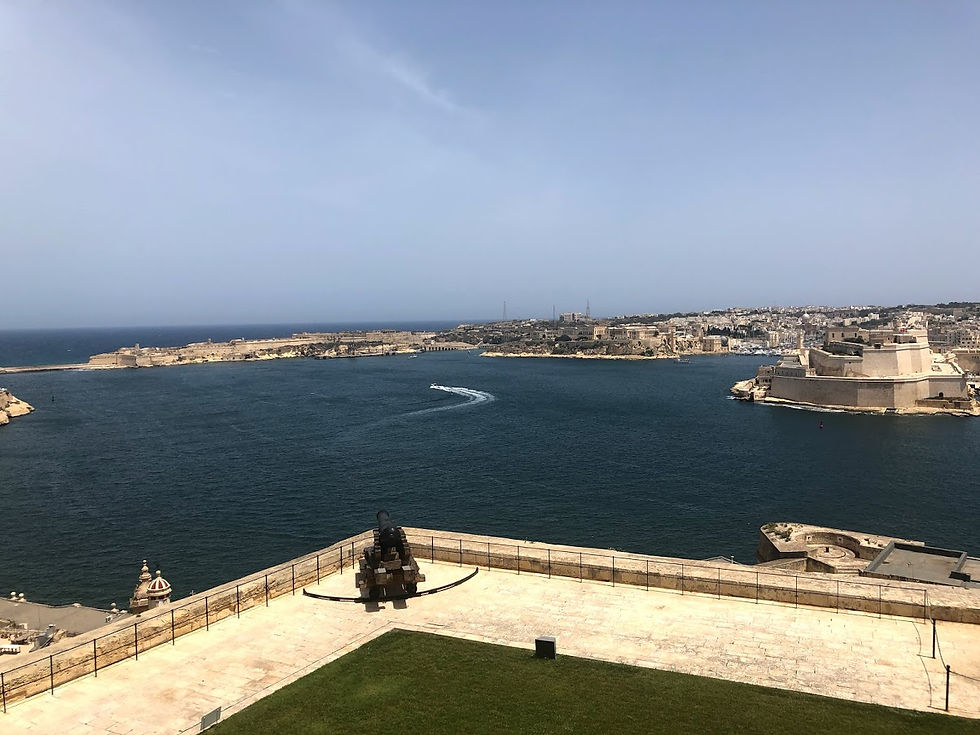
But the area was not always a garden. Originally it was part of the defences of the city, and when it did start also doubling as a garden, it was a private one, belonging to the knights of the Italian langue, who were responsible for the defence of this sector. It was one of these knights, Fra Flaminio Balbiani, who in 1661 financed the construction of the arches we still see today, in order to support a wooden roof that is no longer there.

While there is some uncertainty as to why the roof was removed, there are two theories that have been suggested. The first is related to the Uprising of the Priests in 1775, during the reign of the unpopular Spanish Grand Master Francisco Ximénez de Tejada. It is claimed that having found out that some of the conspirators had been meeting at the Barrakka, Ximenes had the roof taken down as a symbolic warning. The other theory claims that it was stripped by French troops during the blockade of 1798 - 1800, to be used for firewood.
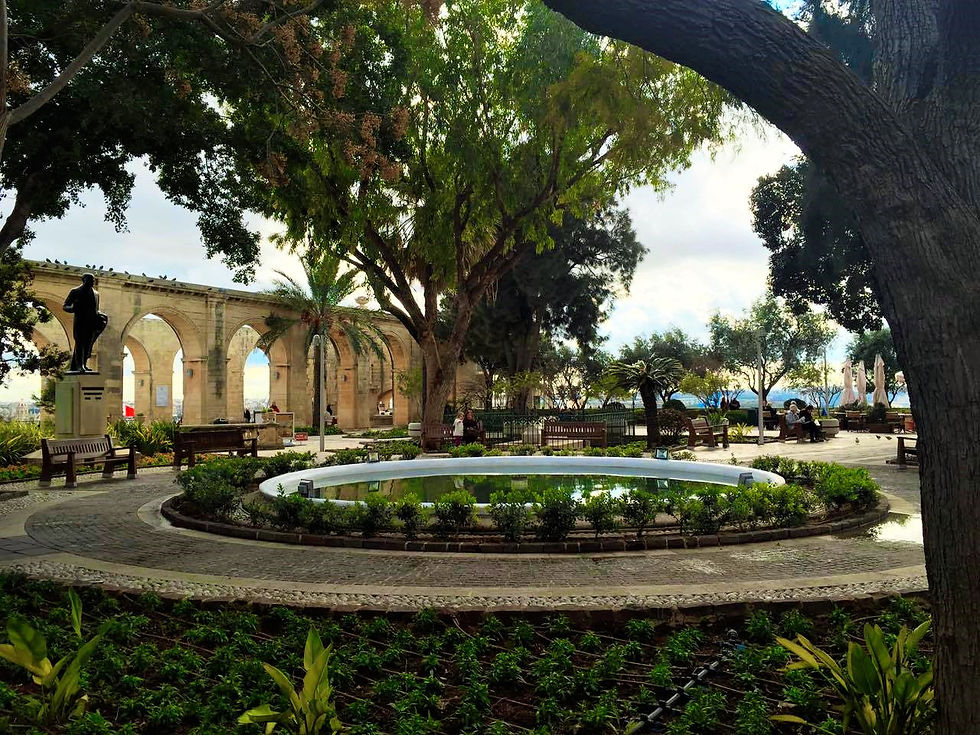
Whatever the truth, the legacy of the roof might still survive to this day through the garden’s name. Although once again there is uncertainty as to the origin of the name Barrakka, the Italian word baracca refers to some sort of temporary wooden structure and is possibly a reference to this no longer existing feature.
2. The Castellania
The Ministry for Health on Merchants Street is located in what was formerly the seat of the Magna Curia Castellania, which presided over the civil and criminal courts during the time of the Order of St. John. The present structure was built between 1757 and 1760 during the reign of the Portuguese Grand Master Manuel Pinto da Fonseca, on the site of an earlier Castellania dating back to the 16th century. The façade in fact is adorned by a number of crescent moons taken from Pinto’s coat-of-arms.

The façade also offers clues as to the building’s former use through the allegorical female figures of Justice and Truth above the central balcony. While the scales representing Justice are now missing, the hand mirror representing Truth is still there. The building also housed a number of prison cells and a small chapel dedicated to Our Lady of Sorrows, where those condemned to death could recite their last prayers.
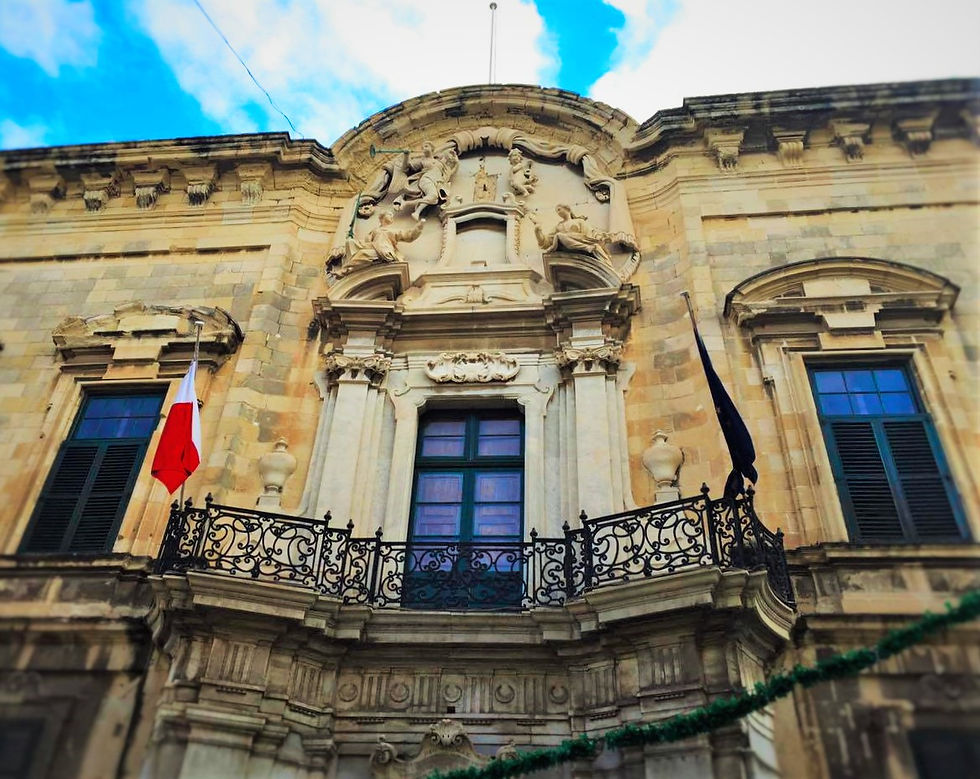
Another interesting feature is the pedestal on the corner of the building with St. John Street. Many people walk past this feature without realising its former use - as a pillory stone where offenders were forced to stand and endure public ridicule as punishment for their crimes.

During British rule, the law courts were transferred to the former Auberge d’Auvergne - on the site of the present law courts - and eventually, the Castellania started to house the Public Health Department. It was here, in his laboratory, that Sir Temi Żammit, the renowned Maltese doctor and archaeologist, discovered unpasteurised goat’s milk as the main source of Mediterranean fever, or Brucellosis, thus solving a conundrum that had been vexing local health authorities for many years. The restored laboratory is still found within the upper floor of the building to this day.
3. The Main Guard
This small building in Valletta’s main square, located directly opposite the Grand Master’s Palace, was until recently part of the Office of the Attorney General. Before that, it was the Libyan Cultural Centre, and even before that it served the role for which it is still named - a guardroom.
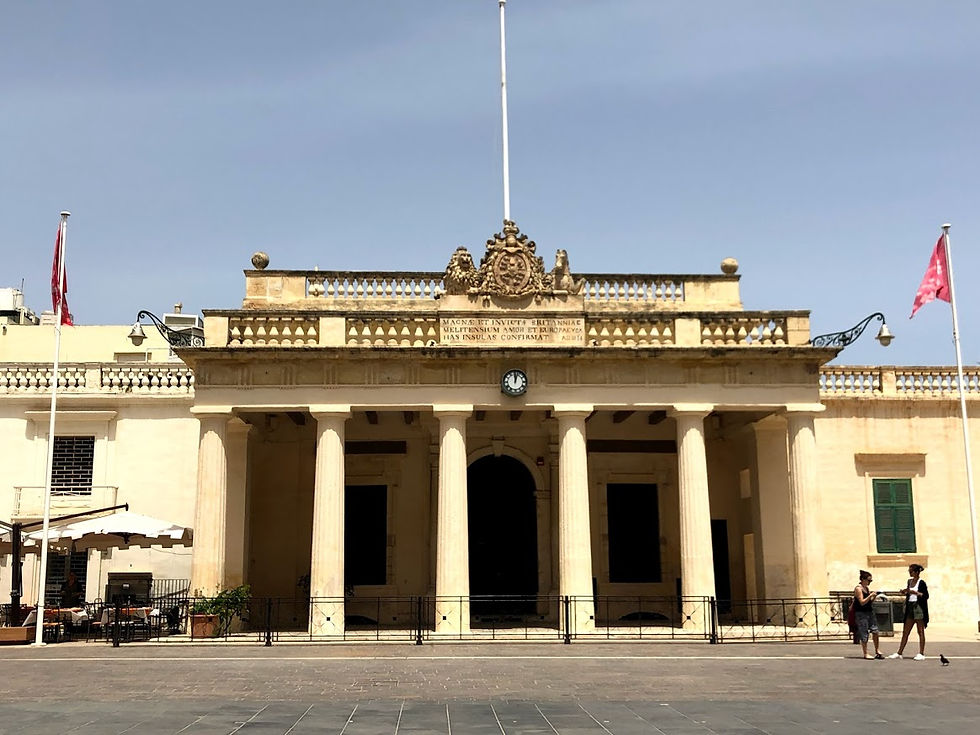
Originally built in 1603 during the reign of French Grand Master Alof de Wignacourt, it served as a guardroom for the Guardia della Piazza - the Grand Master’s bodyguard. The British later added a neo-classical portico, crowned by a stone sculpture of the British Royal coat-of-arms, and an inscription commemorating Malta becoming a British crown colony in 1814.

The British carried on using it as a guardroom, to provide security for the Governor’s Palace across the square. The large upstairs hall also served as an Officers’ Mess, and it is here that the most interesting feature of the building is to be found: a collection of around 300 murals that cover all four walls of the room. While the identity of the individual artists is not known, the murals are clearly the product of bored soldiers tasked with long hours of boring guard duty. Most murals consist of scenes linked to military life, regimental badges, and sketches of life in Valletta as witnessed by the men themselves.
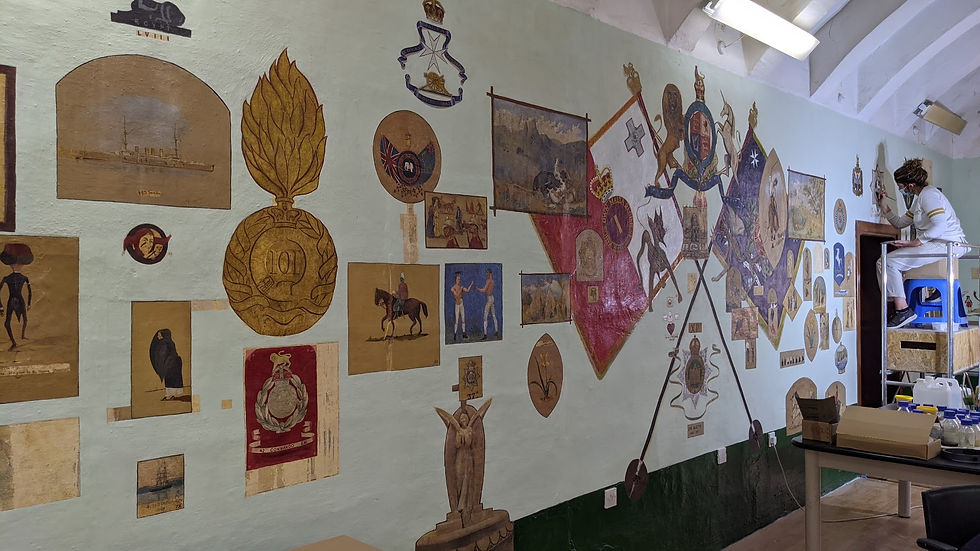
Heritage Malta has recently been painstakingly restoring these murals and plans to turn the Main Guard into a museum and visitor centre.
4. Monte di Pietà e Redenzione
Directly opposite the former Banca Giuratale - now housing the Ministry for the Economy, Investment and Small Business - at No. 46, Merchants Street is the building that was formerly the seat of the Monte di Pietà e Redenzione - the result of an amalgamation of two formerly independent institutions.

The Monte di Pietà was a charitable institution originally set up by the Order of St. John in 1598 to loan money to the needy at modest interest rates, in order to combat usury. People would pawn an object, such as a family heirloom, and were allowed one year to pay back what they had borrowed. When this period expired, the pawned object would be sold by public auction. This institution actually still operates today, as part of the Inland Revenue Department.
The second institution was known as the Monte della Redenzione degli Schiavi. Set up in the early 17th century, its task was to collect money which would then be used to pay the ransom of Maltese who had been captured and enslaved by the Ottoman Turks or the Barbary corsairs - a very common occurrence at the time. Although slaves could be ransomed, most people were too poor to afford to do so themselves. The Monte di Redenzione became redundant in the 19th century after piracy and slavery in the region were suppressed.

For many years, the famous Valletta outdoor market used to set up in this part of Merchants Street, before a more recent move to another part of the city. Interestingly people still refer to it as il-Monti rather than is-Suq, which is from the Arabic souk and is the term used for other markets all over the island. The reason for this is in fact due to it having been situated in front of the Monte di Pietà building for so long, that the name stuck, as well as perhaps to distinguish it from is-Suq tal-Belt, which refers to the indoor market located on the same street.
5. Cotoner Block
An interesting building is that enclosed by Merchants Street, St. Christopher Street, St. Paul Street and St. Dominic Street, known as the Cotoner Block. Originally, this site had been reserved for the building of the Auberge d’Angleterre, in the eventuality of the re-establishment of the English Langue of the Order of St. John, which had been suppressed shortly after the Knights arrived in Malta.
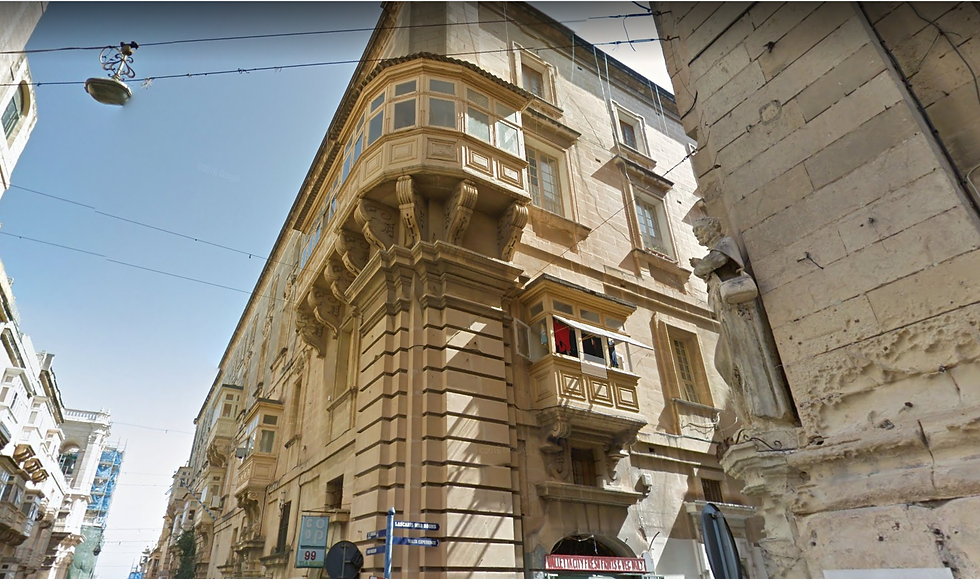
This was due to the dispute between King Henry VIII and the Pope, which led to the breaking away of the Church of England from papal authority and the Roman Catholic Church. With most of their property in England seized by the monarchy, the few remaining English knights faced several financial problems and a reliance on the Order’s treasury, and thus, an English auberge was never built in Valletta.
Instead, the site was eventually used for the construction of a polverista - a gun powder magazine. Unfortunately, on 12th September 1634, the polverista accidentally blew up, killing twenty-two people and seriously damaging nearby buildings, including the Jesuit church and college next door.

After being abandoned for thirty years, in 1664 the Spanish Grand Master Nicolás Cotoner ordered the construction of one of the first affordable apartment blocks on the island, with the rents from the site going to the Cotoner Foundation, established by the same Grand Master to finance several public projects, including the construction of numerous windmills all over Malta. The building was severely damaged by aerial bombardment during World War Two but was later reconstructed faithful to the original.
6. Monastery of St. Ursula
On East Street, overlooking the Grand Harbour is one of the most mysterious buildings in Valletta - the Monastery of St. Ursula. Originally set up by the French Grand Master Hugues Loubenx de Verdalle in the late 16th century, this cloistered nunnery belonging to the female branch of the Order of St. John was allowed to continue its existence when the rest of the Knights were expelled by Napoleon Bonaparte, and thus the nuns can claim to have had an uninterrupted presence here for over 400 years, even if today they are under the jurisdiction of the Maltese Archdiocese rather than the Grand Master.

Various Grand Masters always made sure that enough income was made available for the convent to function, and at one point the nuns were even given the right to claim part of the spoils from corsair activities, in return for prayers for the safe return of those involved! The convent also saw darker times, such as when a number of nuns died during the harsh conditions of the French Blockade, or when they were forced to temporarily abandon the convent during World War Two when the building received damage, but to this day they continue with their vocation.
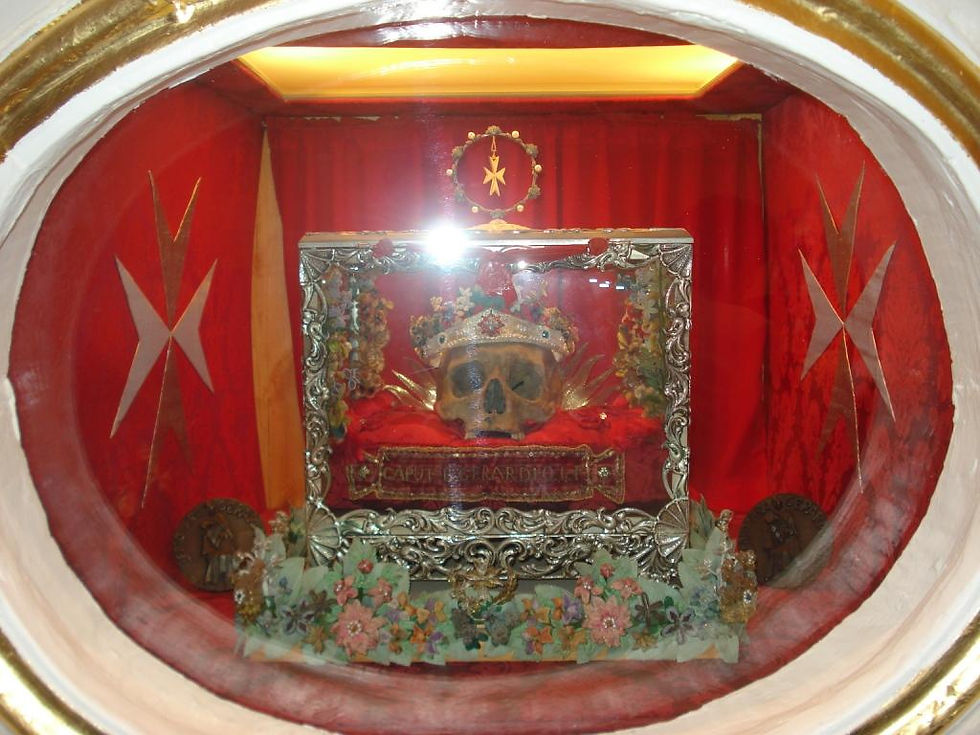
Amongst the precious works of art here is the magnificent St. Ursula altarpiece by Mattia Preti, but the pride of place surely belongs to a very precious relic - the skull of the Blessed Gerard - the founder of the Order of St. John.






Comentários